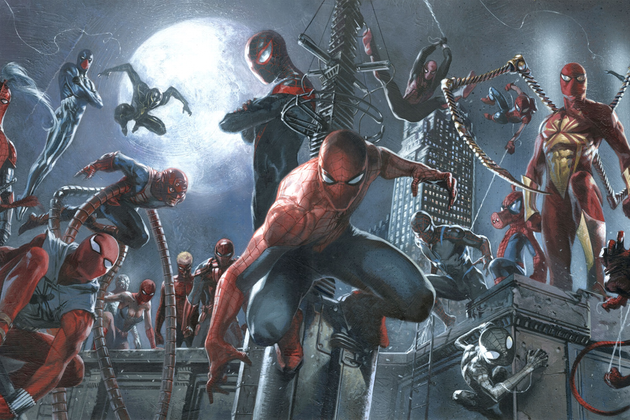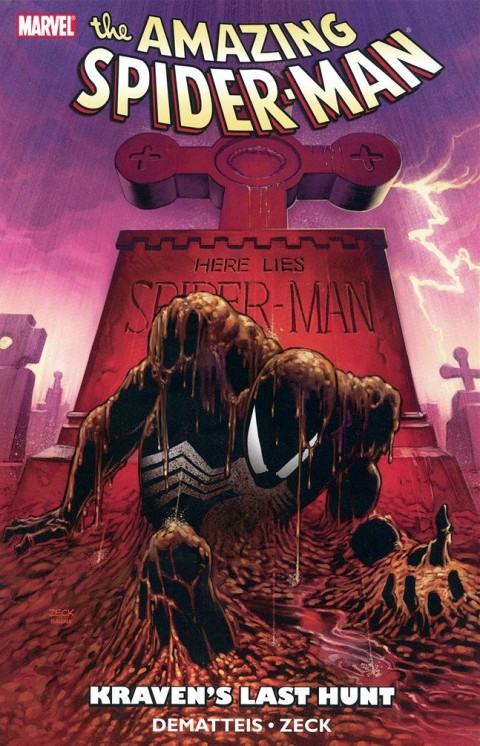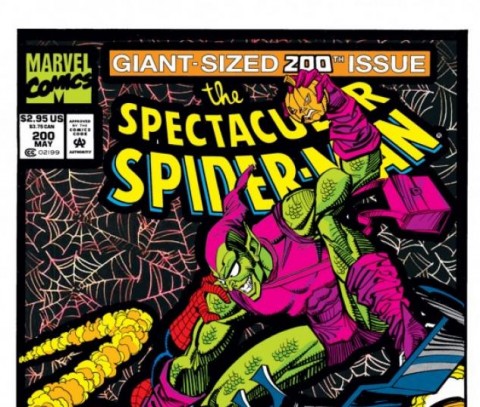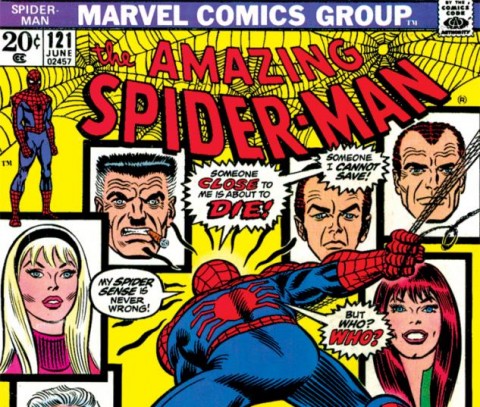Ideally, every comic book story should be able to stand on its own merits and not be read with previous knowledge of a shared universe. Ideally. But, of course, that isn’t always the case. There are certain tales that are specially crafted to continue plot lines set out in a character’s decade old history. So some stories really do require you to have previous knowledge of a comic book universe, or in this case, several Spider-Man Universes.
The brain child of Spider-Man writer Dan Slott, Spiderverse pits the evil Morlun and his family against every Spider-Man (or woman) ever. Morlun and his kind feed off of Spider-Totems and can “eat” the life force of a Spider-Man, killing them and growing stronger. Team Morlun jumps from dimension to dimension killing any Spiders they find along the way. Luckily our Spider-Man is the Spider-Man Prime, and is ready to assemble a team of Spiders to face this threat.
So how many Spiders are we talking about? A whole lot. There is our Spider-Man, Spider-Woman, Silk, Spider-Girl, Peter Porker the Spectacular Spider-Ham, Electric Company Spider-Man, 60s Cartoon Spider-man, Ultimate Cartoon Spider-Man, Ultimate Universe Spider-Man (Miles Morales), Daily Newspaper Strip Spider-Man, Hostess Fruit-Pie Spider-Man, Spider-Gwen, Punk Rock Spider-Man, Japanese TV Show Spider-Man, Captain Universe Spider-Man, Superior Spider-Man, Spider-Cat, Monkey Spider-Man, Captain Britain Spider-Man, and even a Uncle Ben Spider-Man. So many Spiders – and not everybody makes it out alive.
I’m not going to lie to you, the story is probably pretty complicated and borderline unreadable if you’ve never picked up a Spider-Man tale before. But for a Spider-fan, this crossover was pure fun from beginning to end. The main story was found in Amazing Spider-Man (naturally), but it spilled into other titles: x,y,z.
Unfortunately, you don’t really get a sense of every key plot point if you read just Amazing Spider-Man. This, of course, presents a barrier for readers as there is not real indication which books are “important” to an understanding of the main plot. In example, a group of Spider-Man arrive at a key time to turn the tide of battle in Amazing Spider-Man #X, but how they got to that point was told in XX #X. If you concede that other stuff just happens and go with it, you will be fine, but if disjointed action bothers you then you may find your reading problematic.
Spider-Verse reads better as a whole work. There is a pretty solid collected edition that inexcusably and lazily puts the stories in issue order instead of total chronological order. The table of contents gives a reading order for the story but you have to jump back and forth or use post it notes to read things in order. It is fascinatingly unacceptable from Marvel that a trade was constructed in this way, and I hope that future releases will have this corrected.
So with it’s continually jumping around, horribly constructed trade, and overabundance of issues, why do I recommend this as one of my favourite Spidey stories? Because it is a fantastic love letter to Spider-Man and a must read for a fan of the web-slinger. There are so many wonderful moments as you see the different interpretations and incarnations of Spider-Man interacting together. The TV Spider-Man are amazing comic relief, the Spider-Women have a shared sisterhood, and Uncle’s Ben’s story is heartbreaking but an interesting take on a stalwart Marvel character. It is by fans for fans, and it somehow all works.
What ultimately drives the story is the common thread that unites all of the Spider-Men (and women). No matter what universe, no matter what type, they never give up, never back down, and always know that with great power comes great responsibility. Slott and company also manage to give the fans an important message: whichever Spider-Man is your Spider-Man IS a real hero. Maybe you first met the wall crawler as a shy nerd in 1962, or as a cartoon character in a show with a memorable theme-song, or as a Japanese hero who rode a motorcycle, or as a young Black, Latino teen. It doesn’t matter which version is your version because they are all important, and they are all heroes.
If you enjoy Spider-Man style crossovers I would also encourage you to check out the vastly underrated Spider-Island, for a great story that gave everyone in Manhattan Spider-Man powers. Does whatever a spider can.
And with that, this column comes to a close. I had a lot of fun doing it this year and walking down this web-filled memory lane with you all. This also marks the last of my regular columns here at Comic Book Daily. It has been an amazing 5 years and I thank everyone who has made it great.





What, retiring already?